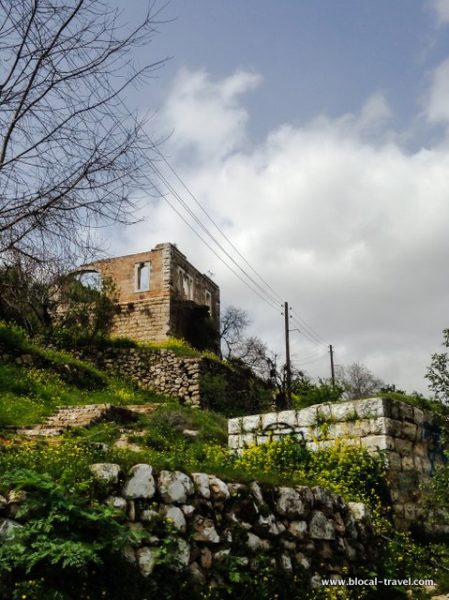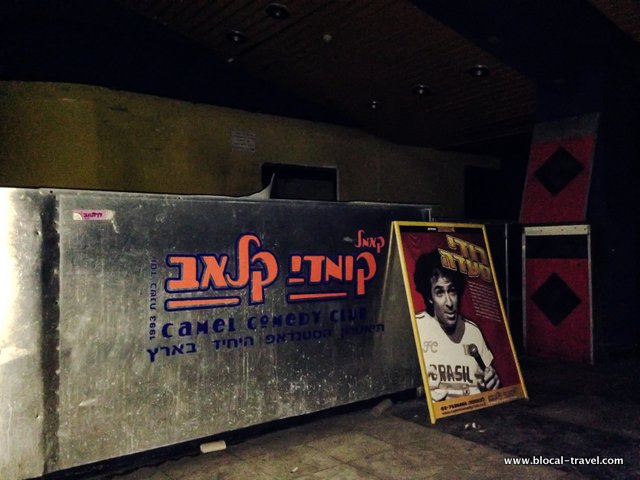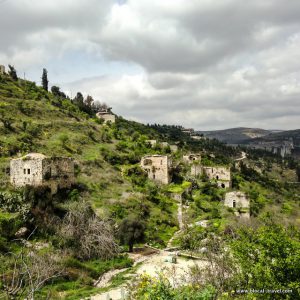 The best part of this travel blogging thing is actually the one you don’t see. It’s getting in touch with like-minded people all over the world, meeting on the road and learning about respective cultures and countries. One year ago, I got an email from Alex (who, btw, is a tour guide at israelwithalex.com). While looking for some recommendations in the Cilento area, he stumbled upon my blog. He subscribed to the newsletter and when he read that I was heading to Israel, he made himself available to go on an adventure with me. An urbex adventure ☺
The best part of this travel blogging thing is actually the one you don’t see. It’s getting in touch with like-minded people all over the world, meeting on the road and learning about respective cultures and countries. One year ago, I got an email from Alex (who, btw, is a tour guide at israelwithalex.com). While looking for some recommendations in the Cilento area, he stumbled upon my blog. He subscribed to the newsletter and when he read that I was heading to Israel, he made himself available to go on an adventure with me. An urbex adventure ☺
Abandoned Places in Israel > The Abandoned Water Park ‘Atraktzia’ (Dead Sea)
At the northernmost, less touristic shore of the Dead Sea, sits Kalia. This resort town was a popular destination for family vacations and its water park ‘Atraktzia’ was well-known all over Israel.

Shut down in 2000, today Atraktzia is abandoned and waterless, a pale reflection of its past glory.


Built upon this decay, the surrounding desert is dotted with abandoned buildings, which look as though they’ve been bombed.
The air was hot and the desert sun was burning my skin. The same harsh sun that faded the once-bright colours and dried the joy out of the water park.

Even the palms looked as if they were gasping for air, not to mention a little water.
As it happens in this kind of places, the contrast between their original purpose and the current stillness is what strikes me most!


Abandoned Places in Israel > The Ghost Town of Lifta (Jerusalem)
Driving back towards Jerusalem, we stopped in the western outskirts of the city to visit the ghost town of Lifta. This Palestinian Arab village was abandoned in 1948 when its inhabitants (around 2550) were deported or fled into the West Bank.
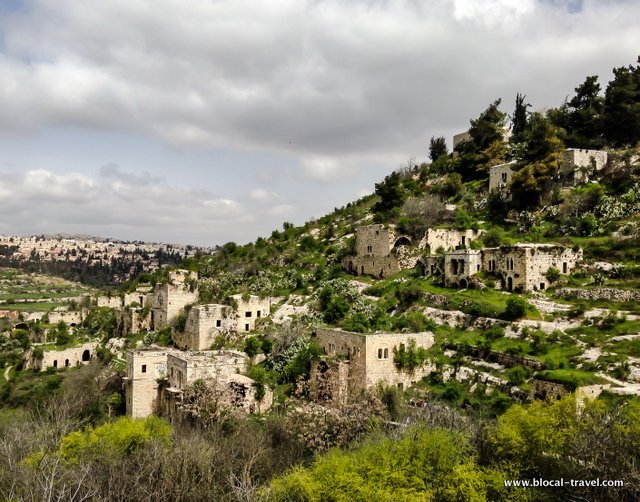
Lifta was ethnically cleansed to make way for the state of Israel. After depopulating it, Israel prevented Palestinians from going back to their homes, making holes in their roofs and confiscating their land and property. However, the beauty of Lifta’s old limestone houses dotting the overgrown valley pays tribute to a prosperous past.

Lifta was a wealthy village of the Ottoman Empire, well-known for its olive groves and embroideries. Among its buildings was an elementary school, a mosque, two coffee houses, a few shops and many pretty houses, all squared and tiny like the ones from the cribs. We walked below houses, past a natural spring and through the overgrown ruins scattered throughout the valley.

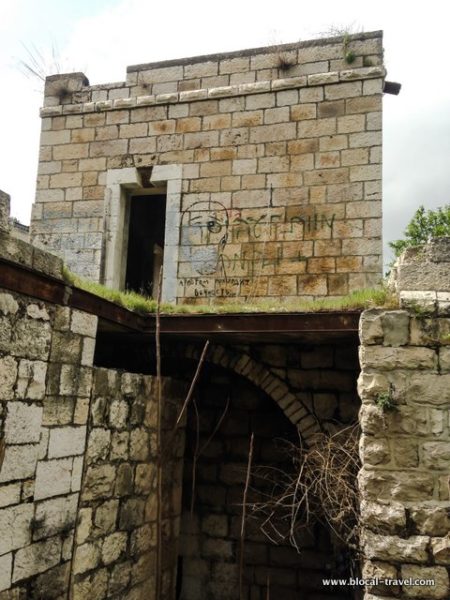
The valley was recently declared a natural reserve to prevent the construction of a luxury neighbourhood and to preserve Lifta’s unique identity and history. The ruined village was saved from demolishing. Lifta is still covered with grass, yellow flowers, poppies and a type of cactus that typically grows in Palestinian villages. All this natural beauty exists, hemmed in by civilization in the form of skyscrapers, highways and overpasses.

Abandoned Places in Israel > The Abandoned Floors of the Central Bus Station (Tel Aviv)
What I’ve already showed you –the graffiti project on the 7th floor of the TLV Central Bus Station– is literally just the tip of the iceberg. The quirkiest and coolest floors in the station are underground and although physically empty – are full of wonders. After reading that 60% of the world’s second largest bus station was abandoned, I went on an exploration.

Vacant stores at the CBS
Entering the empty floors was easier than I imagined, considering the high level of security in the country. However, once I was wandering around that confusing and unsetting maze of escalators and staircases that makes up this Brutalist monster, I couldn’t find accesses to the coolest spots.
Apparenty, these were a movie theatre complex and a 16,000-person capacity nuclear bomb shelter. Luckily, a friend of mine knew ‘the guy with the keys’. His name is Yonatan Mishal and he leads tours of the bus station through the company CTLV. Yonatan was so nice and let me join one of his upcoming tours last-minute so I got the chance to enter the abandoned cinema.

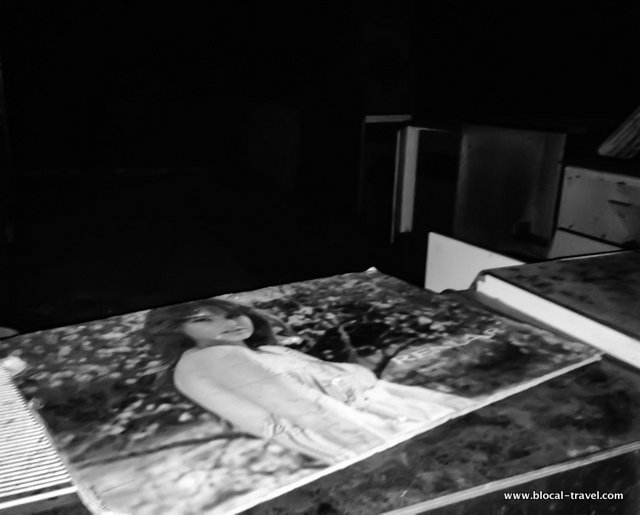
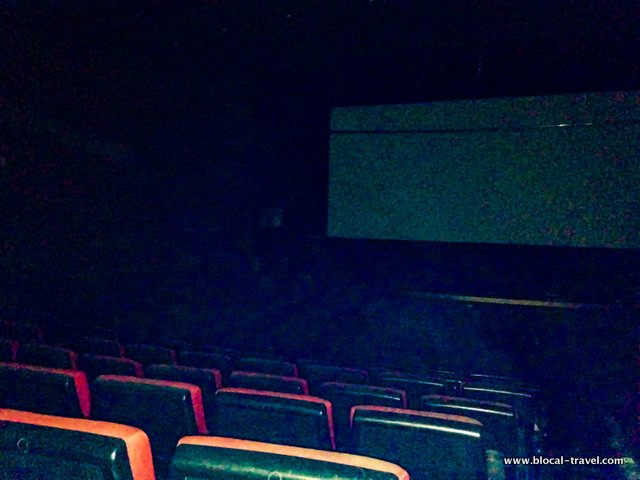
While on the tour, I learned more quirky facts about the surreal Tel Aviv Central Bus Station. (such as that an underground section of the station has actually been declared a nature reserve because of the number of bats living there).


Although we didn’t explore the bunker, after the tour with Yonatan I was more convinced than ever that the central bus station is my favorite place in Tel Aviv. Due to its bad reputation, locals tend to avoid the station and the whole area surrounding it. However, I haven’t perceived it as ‘dangerous’.
Moreover, in addition to the abandoned floors and the graffiti wall of fame, there I found many other quirky spots such as the Filipino Street, the Yiddish Museum and several artists’ ateliers… you surely don’t want to miss this location!
You can hover over these (or any image) to quickly pin it!

PEEK THROUGH || You can spot these abandoned places in my travel video “2 weeks in Israel and Palestine…in 2 minutes”






